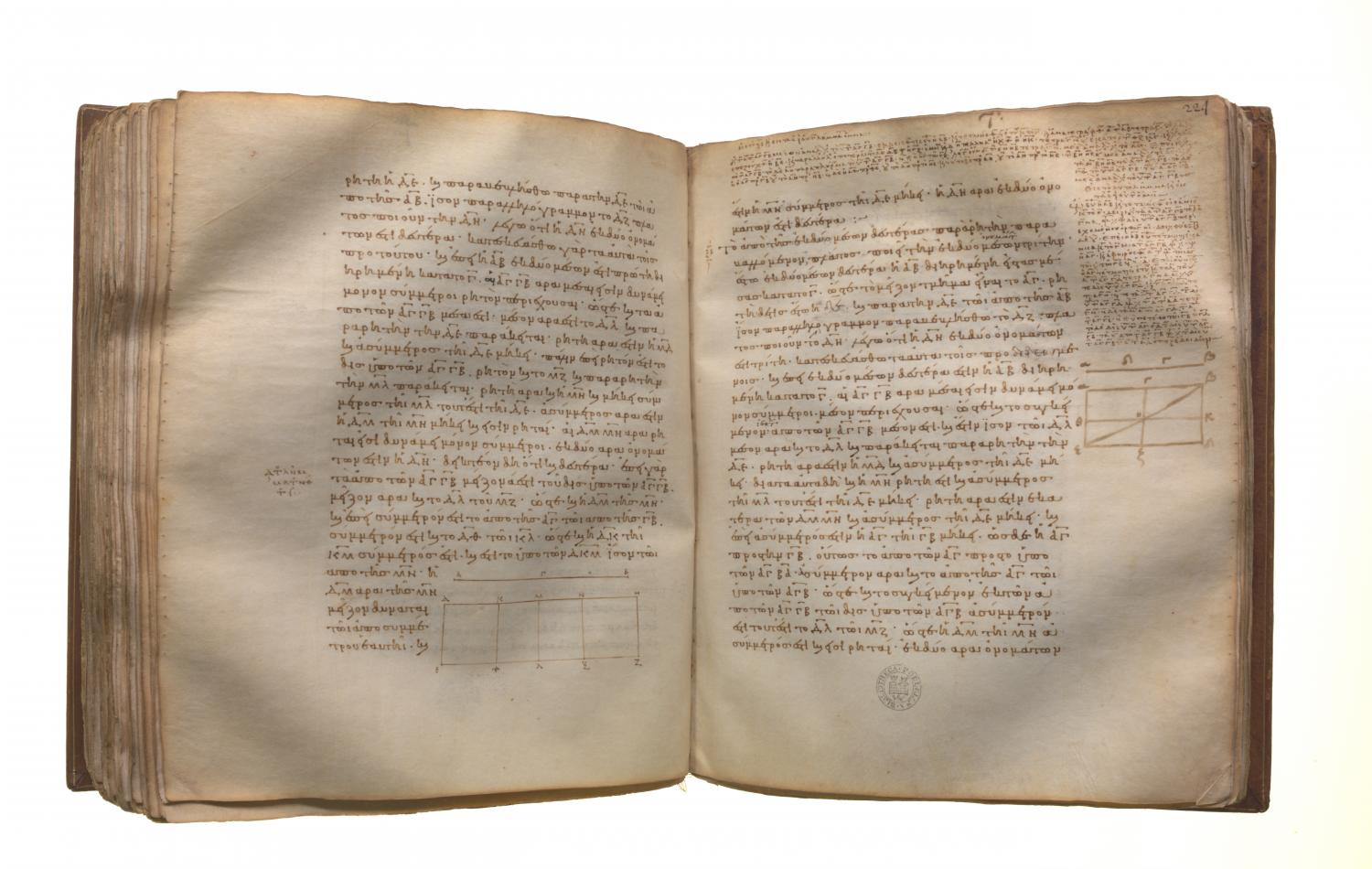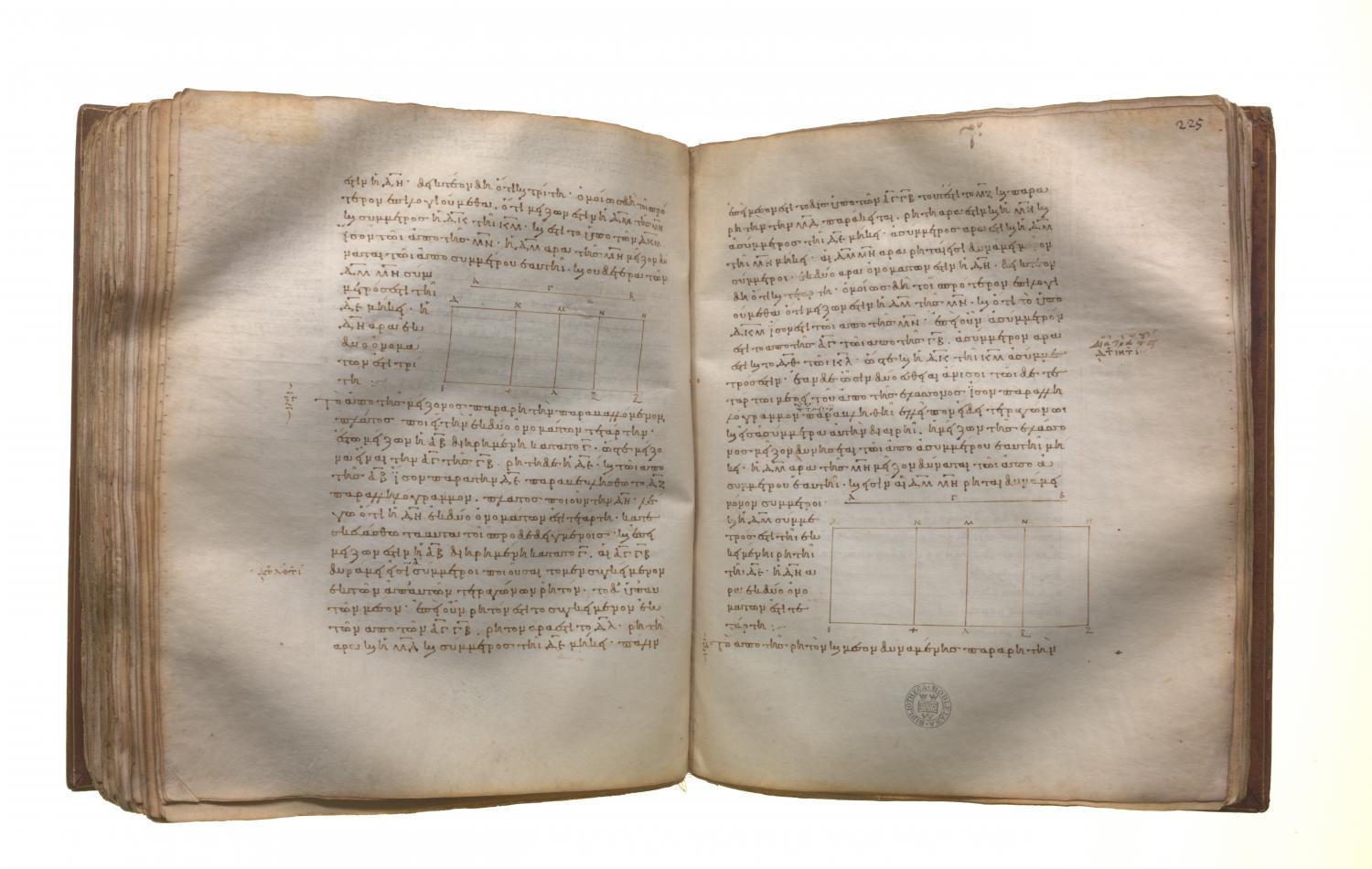Classification of incommensurables: Book 10 Proposition 62
Translations
The square on the second bimedial straight line applied to a rational straight line produces as breadth the third binomial. Let AB be a second bimedial straight line divided into its medials at C, so that AC is the greater segment; let DE be any rational straight line, and to DE let there be applied the parallelogram DF equal to the square on AB and producing DG as its breadth; I say that DG is a third binomial straight line. Let the same construction be made as before shown. Then, since AB is a second bimedial divided at C, therefore AC, CB are medial straight lines commensurable in square only and containing a medial rectangle, [X. 38] so that the sum of the squares on AC, CB is also medial. [X. 15 and 23 Por.] And it is equal to DL; therefore DL is also medial. And it is applied to the rational straight line DE; therefore MD is also rational and incommensurable in length with DE. [X. 22] For the same reason, MG is also rational and incommensurable in length with ML, that is, with DE; therefore each of the straight lines DM, MG is rational and incommensurable in length with DE. And, since AC is incommensurable in length with CB, and, as AC is to CB, so is the square on AC to the rectangle AC, CB, therefore the square on AC is also incommensurable with the rectangle AC, CB. [X. 11] Hence the sum of the squares on AC, CB is incommensurable with twice the rectangle AC, CB, [X. 12, 13] that is, DL is incommensurable with MF, so that DM is also incommensurable with MG. [VI. 1, X. 11] And they are rational; therefore DG is binomial. [X. 36] It is to be proved that it is also a third binomial straight line. In manner similar to the foregoing we may conclude that DM is greater than MG, and that DK is commensurable with KM. And the rectangle DK, KM is equal to the square on MN; therefore the square on DM is greater than the square on MG by the square on a straight line commensurable with DM. And neither of the straight lines DM, MG is commensurable in length with DE.

